The Monstera Deliciosa, fondly known as the “Swiss Cheese Plant,” captivates plant enthusiasts with its dramatic, fenestrated leaves and vigorous growth. To unlock the full potential of this tropical beauty, understanding and mastering its lighting needs is essential. Let’s illuminate the path to cultivating a thriving Monstera within your own indoor jungle.

Contents
- 1 Understanding the Monstera’s Natural Habitat
- 2 The Importance of Proper Lighting
- 3 Decoding the Perfect Lighting Conditions
- 4 Diving Deep into Grow Lights for Monstera
- 5 Recognizing Signs of Lighting Issues
- 6 Common Lighting Mistakes to Avoid
- 7 Expert Tips for Optimal Lighting
- 8 Beyond Lighting: Holistic Monstera Care
- 9 Embracing the Monstera Journey
Understanding the Monstera’s Natural Habitat
Native Rainforest Conditions
- Filtered Sunlight Under the Canopy: In the dense rainforests of Central and South America, Monsteras climb towering trees, basking in dappled sunlight filtered through layers of foliage.
- Consistent Daylight Hours: Near the equator, daylight remains relatively constant year-round, providing steady light exposure.
- High Humidity and Warmth: The humid, warm environment contributes significantly to the plant’s lush growth.
The Importance of Proper Lighting
Promotes Characteristic Leaf Development
- Adequate light encourages the formation of the plant’s signature splits and holes, known as fenestrations.
Supports Vigorous Growth
- Photosynthesis Fuel: Light is the primary energy source for photosynthesis, driving healthy growth and robust foliage.
- Prevents Legginess: Ensures the plant doesn’t become spindly as it stretches towards insufficient light sources.
Decoding the Perfect Lighting Conditions
Bright, Indirect Light is Ideal
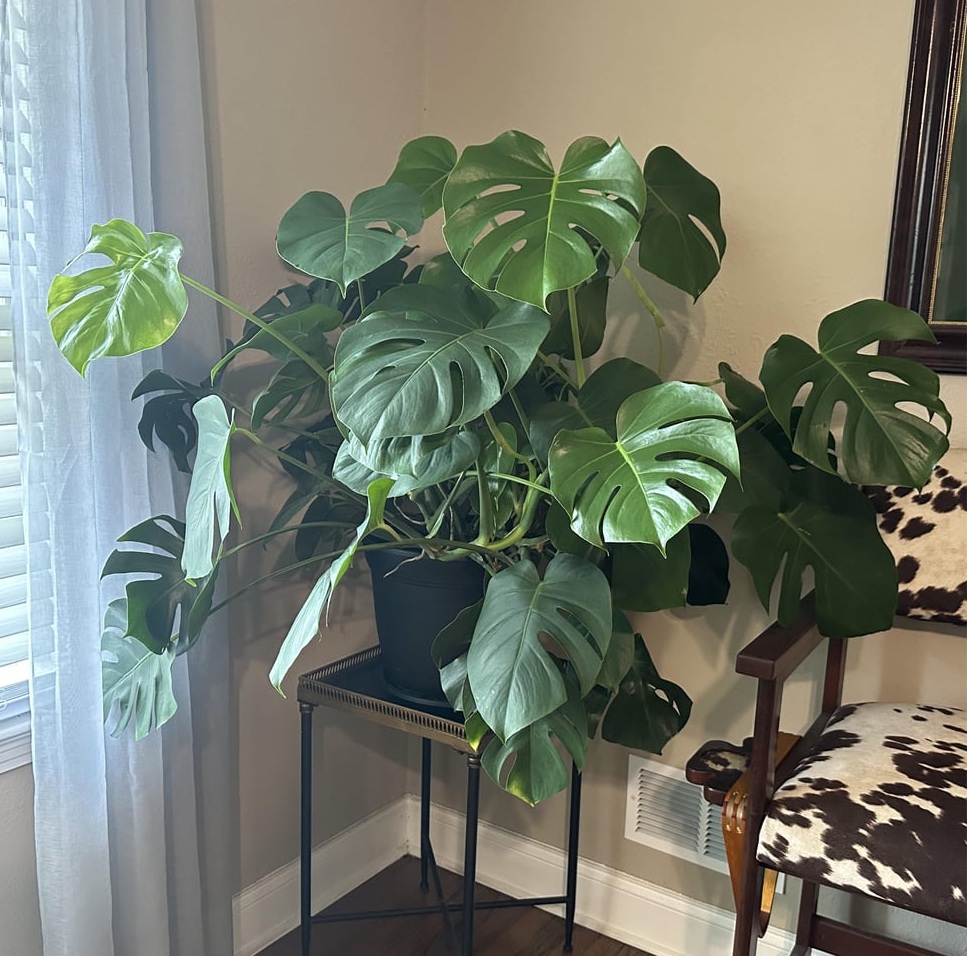
- East or South-East Facing Windows: Provide gentle morning sunlight without the intensity of afternoon rays.
- Sheer Curtains for Diffusion: Mimic the rainforest canopy by diffusing harsh light through curtains or blinds.
- Strategic Placement: Position your Monstera 2-4 feet away from windows with strong sunlight.
Avoid Direct Sunlight
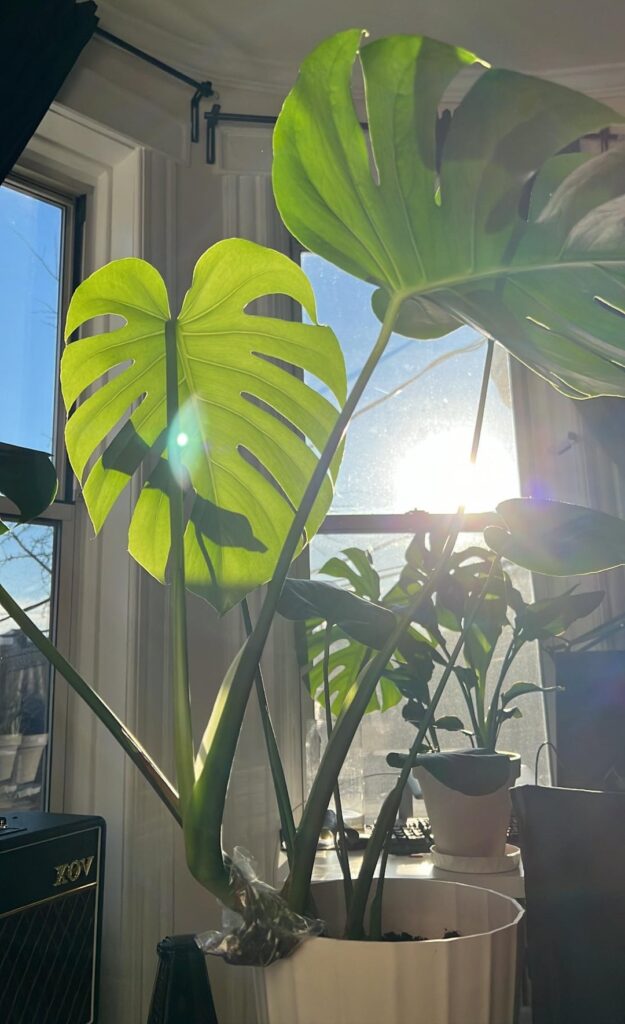
- Leaf Scorch Risk: Direct light can burn the leaves, leading to brown spots and damage.
- Balanced Exposure: Aim for light that is bright enough to cast a soft shadow but not so intense that it feels hot to the back of your hand.
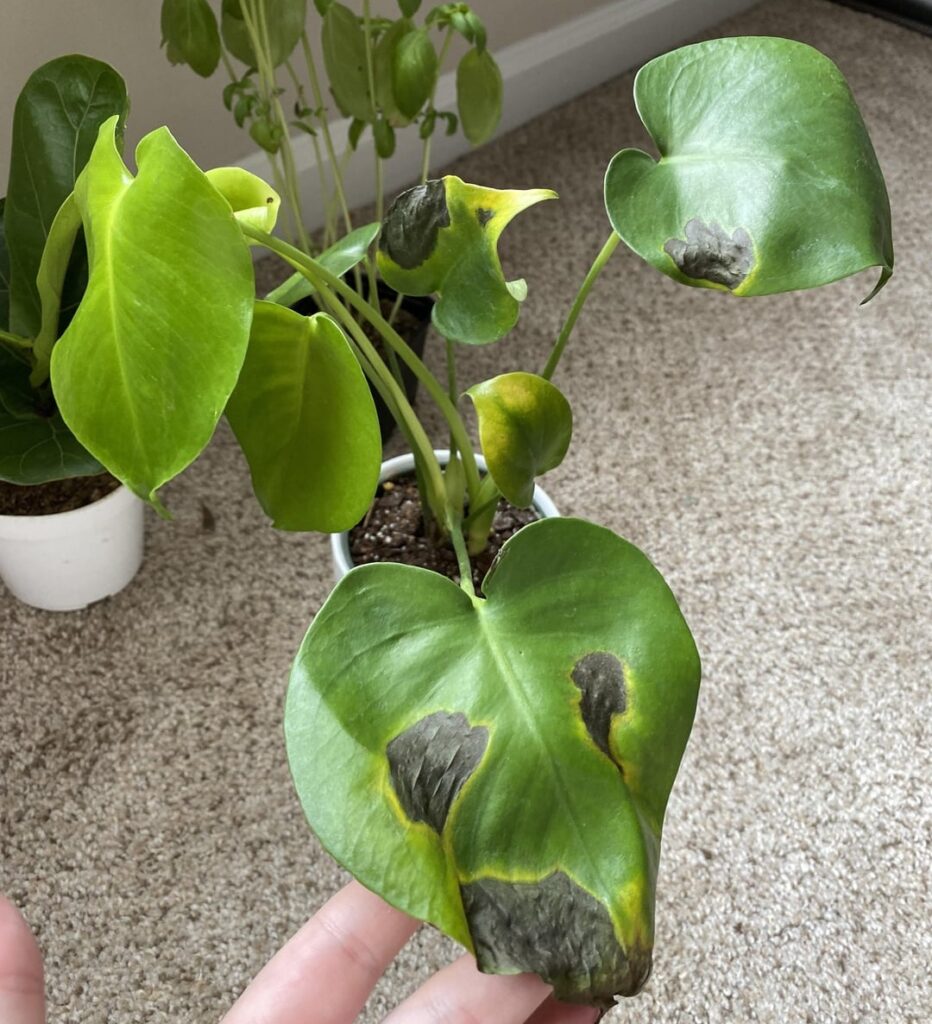
Diving Deep into Grow Lights for Monstera
When natural light is insufficient or inconsistent, grow lights become a valuable ally in nurturing your Monstera.
Selecting the Right Grow Lights
- Full-Spectrum LED Lights: Replicate natural sunlight across all spectrums, promoting healthy growth.
- Energy Efficiency: LEDs consume less power and produce less heat, reducing the risk of overheating your plant.
- Color Temperature: Choose lights with a color temperature between 5000K to 6500K to simulate daylight.
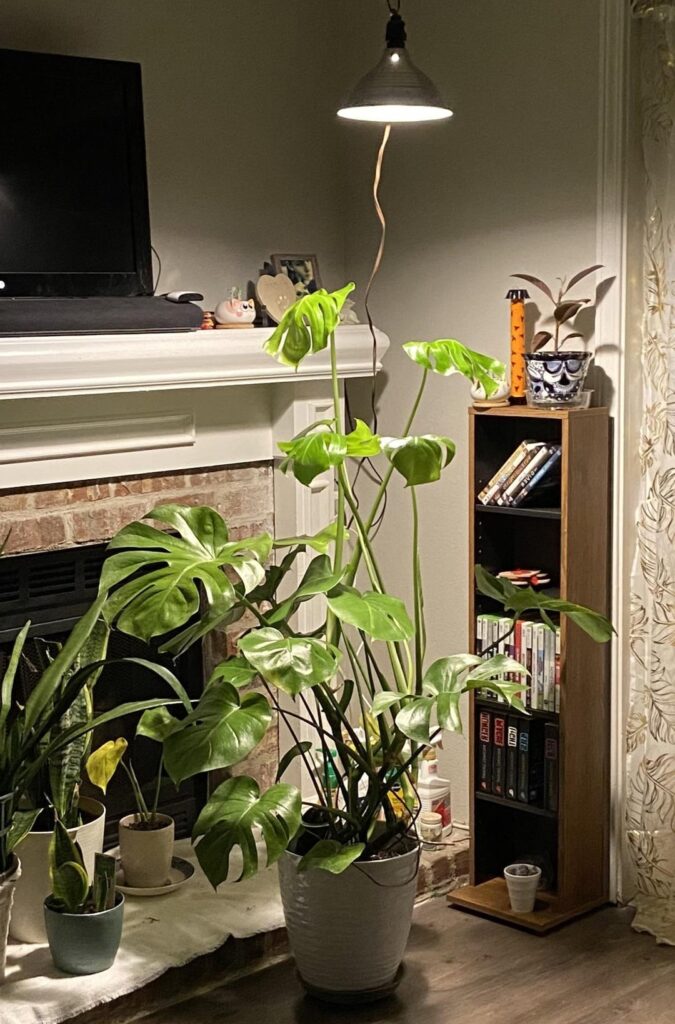
Setting Up Your Grow Lights
- Placement Distance: Position the lights 12-24 inches above the plant to ensure even light distribution without scorching the leaves.
- Duration and Timing:
- Consistent Schedule: Use timers to provide 12-14 hours of light per day, emulating natural cycles.
- Gradual Adjustments: Introduce grow lights gradually to prevent shock.
Benefits of Using Grow Lights
- Year-Round Growth: Maintain optimal light levels during darker winter months.
- Flexibility: Allows for optimal plant placement in your home, regardless of window availability.
- Control Over Light Intensity: Tailor the brightness to meet your Monstera’s specific needs.
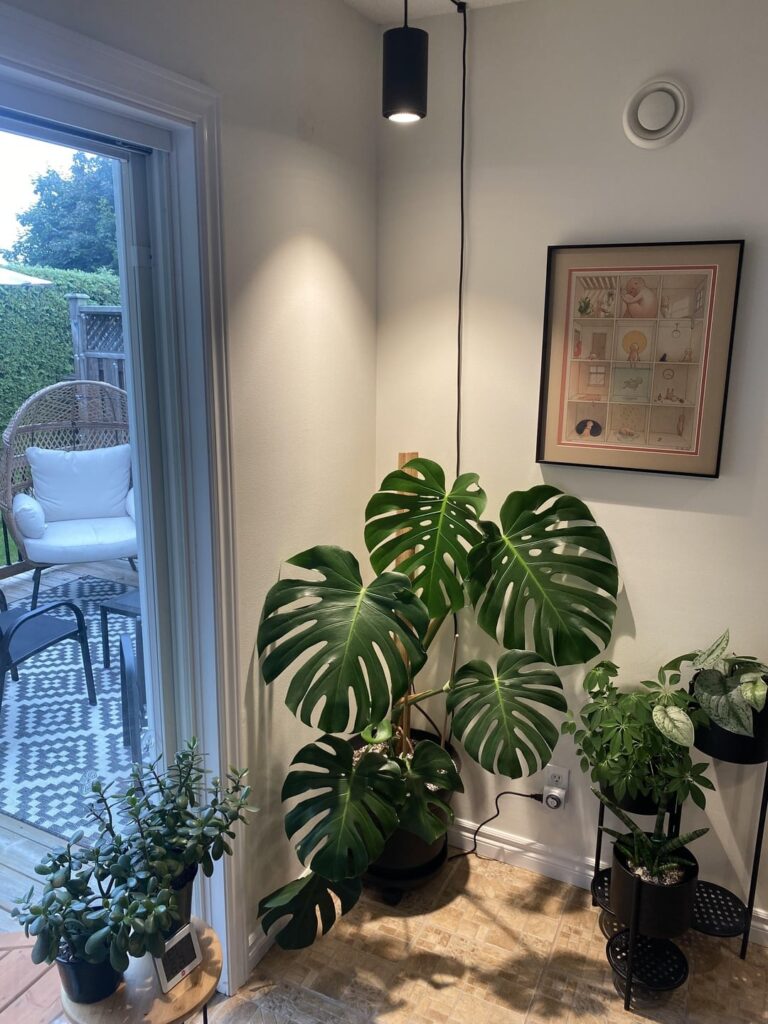
Tips for Maximizing Grow Light Effectiveness
- Reflective Surfaces: Place reflective material around the plant to enhance light distribution.
- Monitor Heat Levels: Ensure the lights do not raise the temperature excessively, which can dry out your plant.
Recognizing Signs of Lighting Issues
Your Monstera communicates its needs through changes in appearance.
Indicators of Adequate Lighting
- Healthy Fenestrations: New leaves display abundant splits and holes.
- Rich, Vibrant Foliage: Leaves are a deep green color and have a glossy sheen.
Symptoms of Light Problems
- Leggy Growth: Long, stretched stems reaching towards light sources indicate insufficient light.
- Yellowing or Pale Leaves: May suggest too much direct sunlight or, conversely, inadequate light.
- Brown Leaf Tips or Edges: Often a sign of sunburn from excessive light intensity.
- Lack of Fenestration on Newer Leaves: New leaves that remain solid without developing splits or holes may signal a lack of sufficient light.
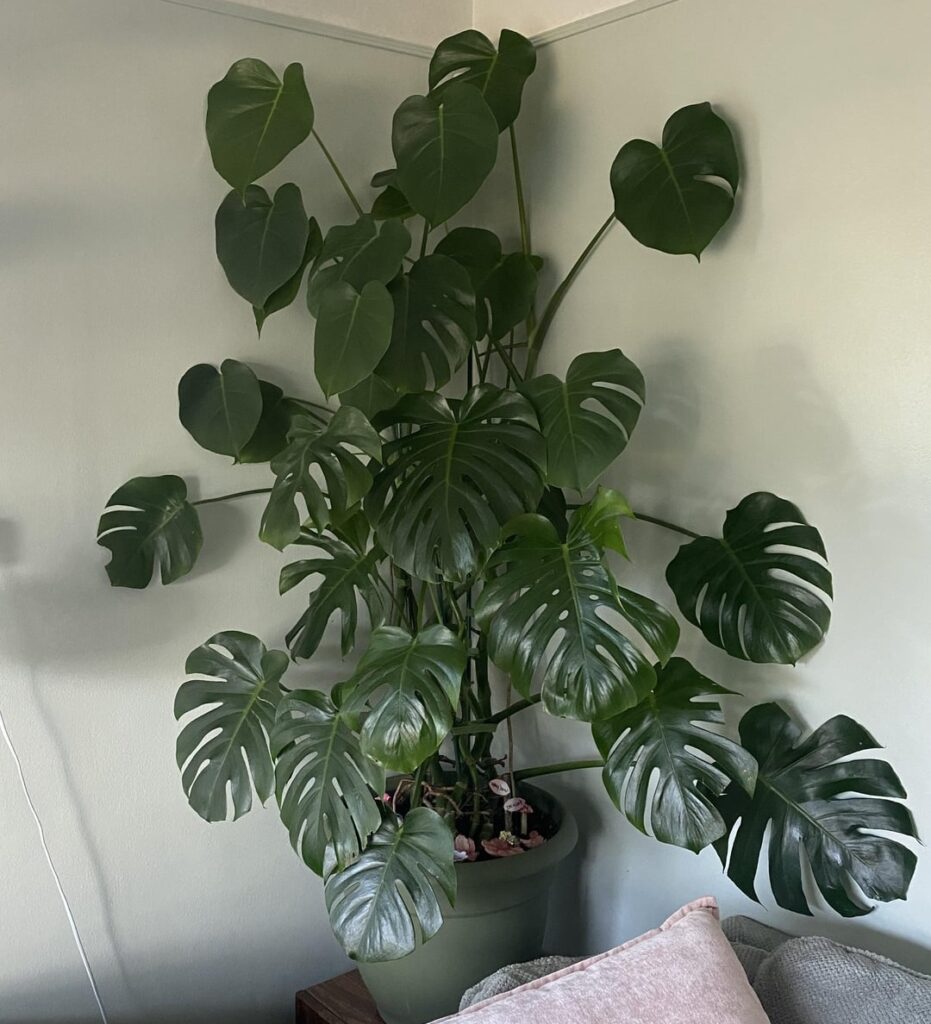
Common Lighting Mistakes to Avoid
Overexposure to Harsh Sunlight
- Problem: Direct midday sun can scorch leaves.
- Solution: Relocate to an area with filtered light or use window films to reduce intensity.
Neglecting Seasonal Light Changes
- Problem: Failing to adjust for shorter days in winter can deprive your plant of necessary light.
- Solution: Supplement with grow lights during darker months to maintain consistent exposure.
Inconsistent Light Schedules
- Problem: Irregular lighting can stress your Monstera, leading to poor growth.
- Solution: Establish a consistent lighting routine, especially important when using artificial lights.
Incorrect Grow Light Placement
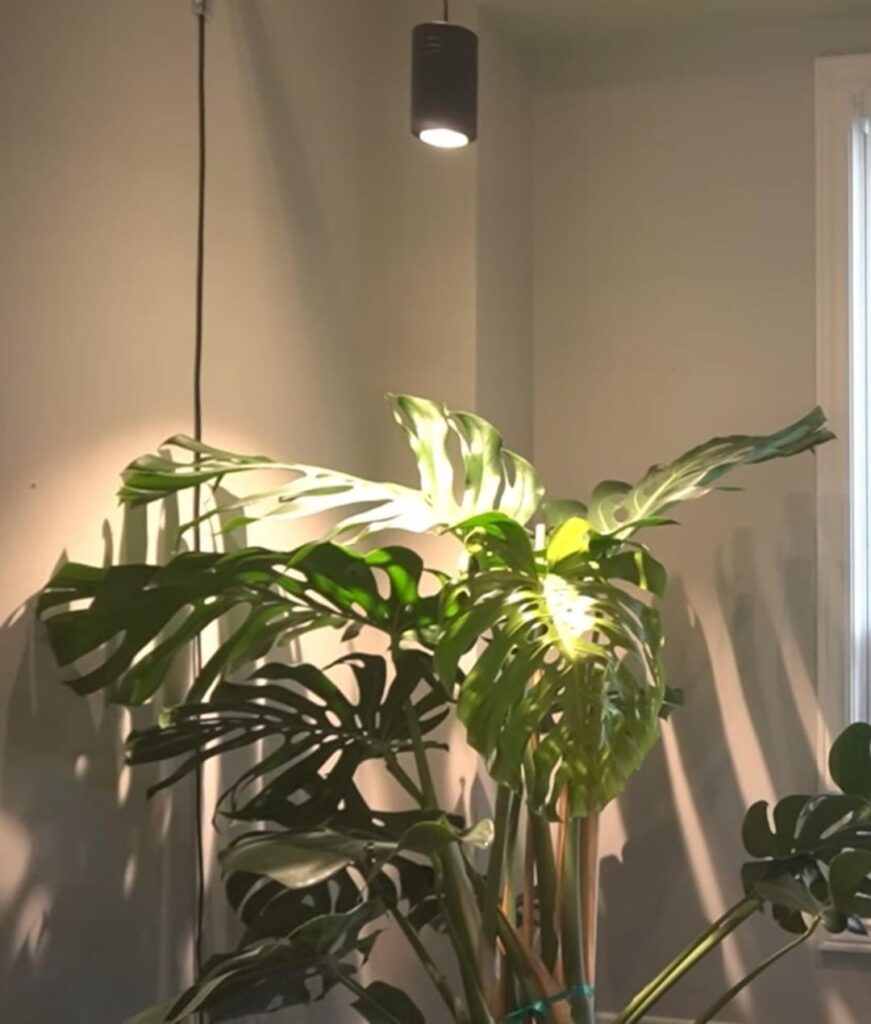
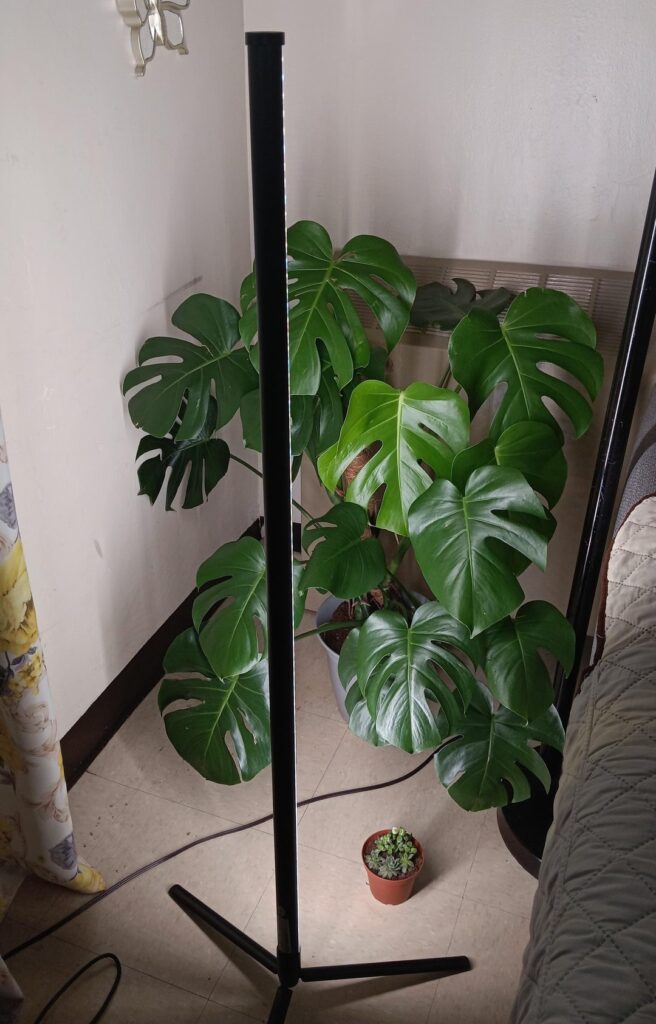
- Problem: Positioning grow lights directly above the plant can cause the leaves to point upwards. Placing them in front of the plant causes the leaves to face forward.
- Solution: Adjust the placement based on your aesthetic preference while ensuring even light distribution.
Expert Tips for Optimal Lighting
Rotate Your Plant
- Even Growth: Turning your Monstera every week ensures all sides receive equal light, promoting symmetrical growth.
Keep Leaves Dust-Free
- Enhanced Photosynthesis: Clean leaves with a soft, damp cloth to remove dust that can block light absorption.
Adjust with Growth
- As Your Monstera Grows: Reevaluate its lighting needs periodically, especially if it’s outgrowing its current space.
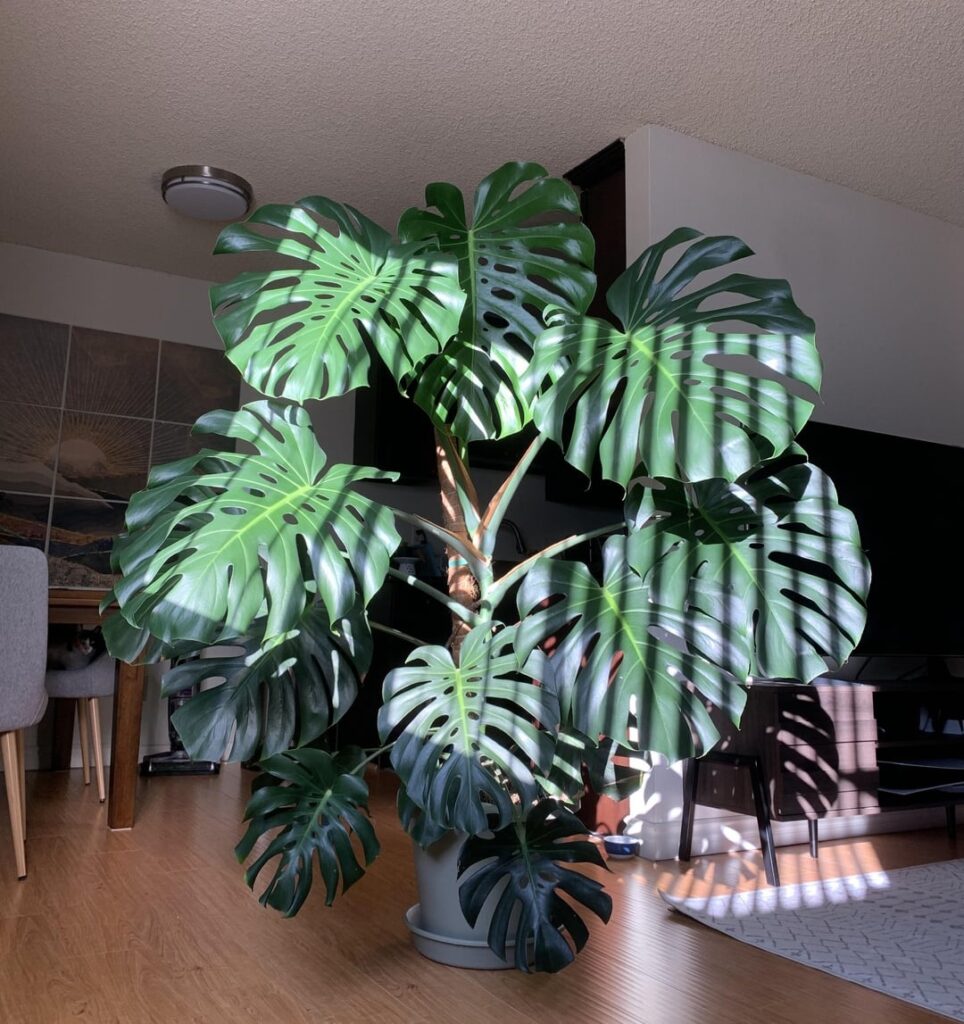
Beyond Lighting: Holistic Monstera Care
Embrace Humidity
- Increase Moisture Levels:
- Misting: Lightly mist leaves to boost humidity.
- Humidity Trays: Place a tray with water and pebbles beneath the pot.
- Humidifiers: Use a room humidifier during dry seasons.
Optimal Watering Practices
- Consistent Schedule: Water when the top inch of soil feels dry.
- Avoid Overwatering: Ensure the pot has drainage holes to prevent root rot.
Nutrient Support
- Fertilization: Feed with a balanced, water-soluble fertilizer every 4-6 weeks during the growing season.
Provide Support Structures
- Moss Poles or Trellises: Mimic natural climbing conditions, encouraging upward growth and larger leaves.
Embracing the Monstera Journey
Cultivating a Monstera Deliciosa is a rewarding adventure that brings a slice of the rainforest into your home. By mastering the nuances of lighting—whether from the sun or supplemented with grow lights—you set the stage for a plant that not only survives but truly thrives, showcasing the lush, fenestrated foliage that makes it so beloved.
